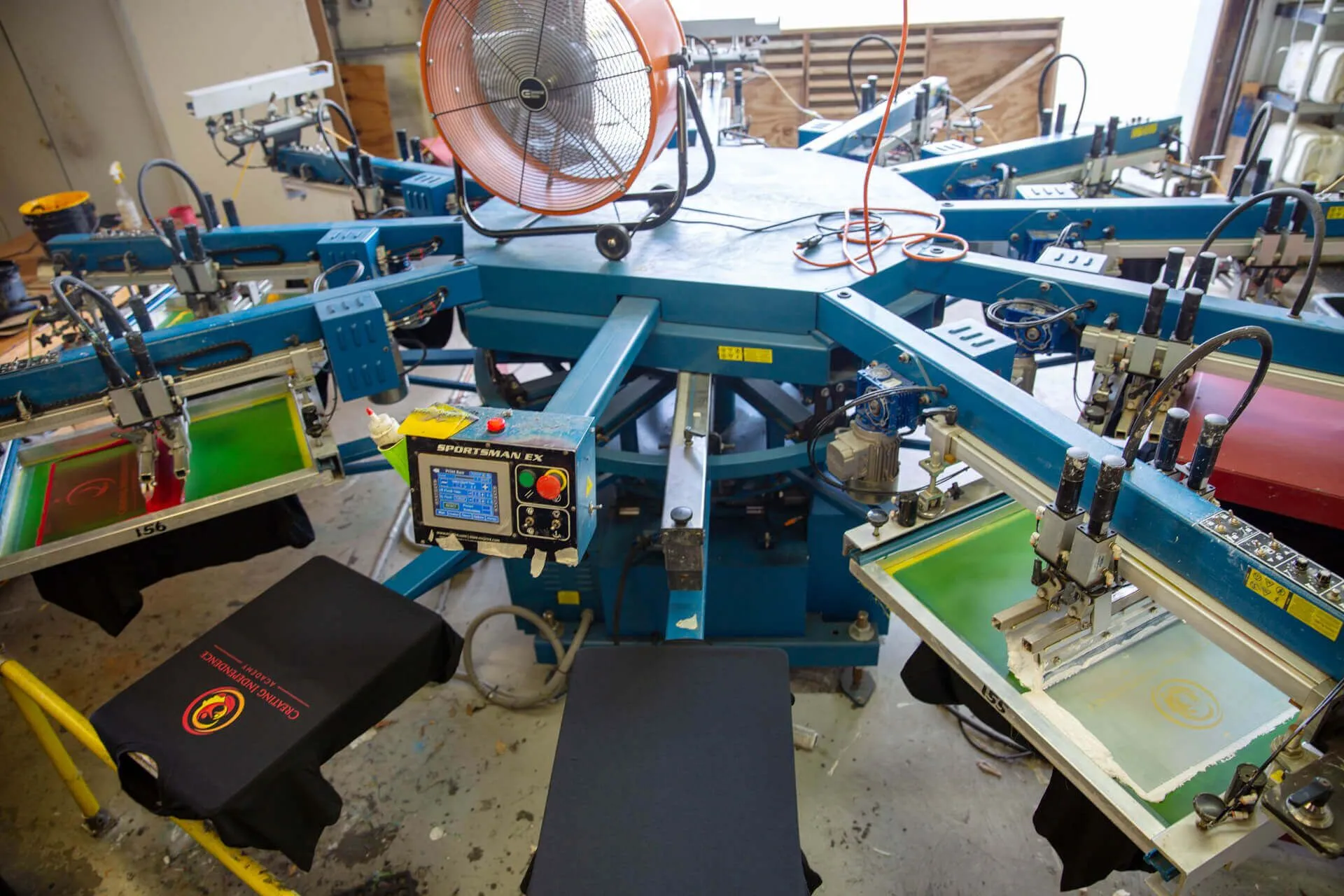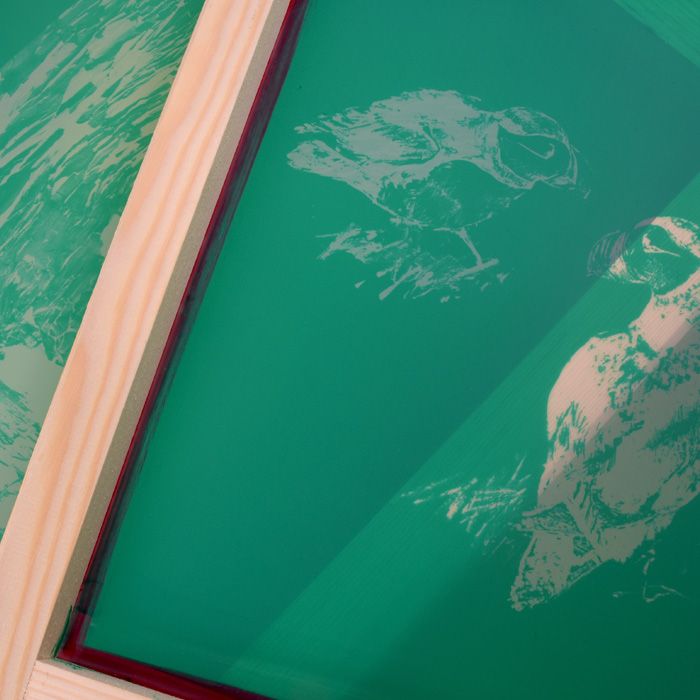High-Volume T-Shirt Printing for Schools and Organizations
High-Volume T-Shirt Printing for Schools and Organizations
Blog Article
Screen Printing Uncovered: Whatever You Required to Understand About Tee Shirt and Garment Printing Techniques
Display printing is an interesting method that incorporates art with strategy, providing limitless opportunities for creativity. Ready to explore the crucial components that make screen printing an art kind?
The Basics of Display Printing: Just How It Functions
When you dive into screen printing, you'll discover it's both a scientific research and an art. At its core, screen printing involves creating a stencil, or screen, that permits ink to pass through just in details locations.
Following, you'll mix your inks and prepare your printing surface. Position the screen over the fabric, then utilize a squeegee to press ink with the display onto the garment. This procedure requires accuracy, as you desire clear, lively prints. After printing, you'll cure the ink with heat, guaranteeing it follows the material and lasts through cleans. Each step is crucial, and mastering them will certainly boost your display printing skills, transforming simple garments right into special, expressive pieces.
Sorts Of Screen Printing Strategies
When you understand the fundamentals of display printing, it's time to explore the various strategies that can raise your styles. One popular approach is typical screen printing, where ink is pressed through a stenciled display. This technique is fantastic for bold, vivid colors. Then there's water-based ink printing, which supplies a softer feel and is green, however it needs a different strategy to healing.
If you're aiming for fine details, think about discharge printing. This technique removes color from the textile, leaving a soft, vintage look. Another choice is plastisol printing, understood for its sturdiness and brilliant colors, making it a preferred for many brands. Experiment with halftone printing to create gradient impacts and detailed styles. Each method has its one-of-a-kind appeal, so don't think twice to try them bent on find what matches your style best!
Essential Equipment for Screen Printing
To accomplish sensational outcomes in screen printing, having the best equipment is basic. You'll require a durable screen printing frame, which holds the mesh that moves your layout onto the garment. Next off, spend in high-grade squeegees; these are necessary for applying ink equally across the screen.
Selecting the Right Inks and Products
When choosing inks and products for display printing, you need to take into consideration the sort of ink that works best for your project. Believe about material compatibility to ensure your designs look last and great long. Explore environment-friendly ink options to make your printing process extra lasting.
Kinds of Screen Inks
Selecting the ideal display ink is necessary for accomplishing vivid, sturdy prints that meet your task's requirements. There are numerous kinds of display inks to analyze. Specialized inks, such as glow-in-the-dark or metallic, can add special results to your designs.

Fabric Compatibility Considerations
Understanding textile compatibility is crucial for attaining high-quality screen prints, particularly given that various products respond distinctly to various inks. Constantly evaluate your inks on example fabric to ensure they stick properly and maintain color integrity. Additionally, maintain in mind that material weight and texture can impact the final result, so selecting the best ink and material combination is important for your project's success.
Eco-Friendly Ink Options
Environmentally friendly inks are becoming a preferred option for screen printers that wish to reduce their ecological effect while maintaining high quality. When picking inks, take into consideration water-based inks, which are much less damaging and much easier to cleanse up contrasted to typical solvents. These inks bond well with materials, delivering vibrant results without toxic chemicals. You may also check out eco-solvent inks that use less volatile natural substances (VOCs), making them a more secure option for both your wellness and the world.
Additionally, seek inks made from renewable energies, such as soy or vegetable-based options. By picking the appropriate inks and products, you'll not only create stunning layouts but additionally add to a much more lasting printing process. Make the button, and your prints will certainly show your commitment to the setting!
Preparing Your Layout for Screen Printing

Submit Layout Requirements
To ensure your layout looks vibrant and sharp on material, you'll need to pay close interest to submit style needs for display printing. Make certain your design has a transparent history to prevent unwanted white sides on your prints. Keep shade settings in mind; CMYK is typical for display printing, so convert your RGB creates appropriately.
Shade Separation Strategies
Shade splitting up is a vital action in preparing your layout for click over here screen printing, and grasping it can considerably boost your print quality. You'll require to damage your layout right into private colors, as each color requires a separate display during printing. Begin by recognizing all the shades in your design and create layers for each one. You can utilize software program like Adobe Photoshop or Illustrator to isolate and separate colors effectively. Be particular to conserve each layer as a different file, usually in a layout like TIFF or PSD. This precision not just ensures accurate shade representation but additionally simplifies the printing process. By focusing on color separation, you'll attain dynamic and professional lead to your screen-printed garments.
Resolution and Dimension
Achieving the very best lead to screen printing begins with guaranteeing your design has the appropriate resolution and dimension. Preferably, your art work must be at least 300 DPI (dots per inch) for sharp, clear prints. Your final product could look less than professional and pixelated. if you utilize reduced resolution.
When it involves dimension, take into consideration the dimensions of your print area. Style your art work to match the last print dimension, preferably creating it in the actual measurements you'll be publishing. By doing this, you'll prevent any kind of unexpected scaling problems.
Always check your style in both vector and raster styles. Vector graphics can be scaled without losing high quality, making them suitable for screen printing. Preparing properly will guarantee your design looks fantastic on every garment!
Step-by-Step Display Printing Refine
Display printing is a vibrant process that enables you to develop vibrant designs on different surfaces. To start, you'll need a pop over here screen, solution, and your picked ink. Prepare your screen by cleaning it thoroughly. Next, apply the solution equally and allow it dry in a dark area. When dry, subject your display to light with your layout positioned on it, which will certainly solidify the solution where the light hits, producing a pattern - screen printing kit.
Pour ink onto the screen and use a squeegee to push the ink with the stencil onto the textile. Lift the display very carefully and allow the print dry. You've efficiently display published your style.
Tips for Successful Screen Printing Projects
While you're diving right into your display printing tasks, keep in mind that preparation is crucial to Click This Link success. Begin by collecting all your products-- inks, garments, squeegees, and displays. A tidy workspace assists avoid undesirable errors, so clean before you begin.
Following, validate your artwork is high-resolution and effectively sized for your garment. Examine your screen for proper exposure and clean it completely to avoid spots. When blending your inks, adhere to the supplier's guidelines to attain the appropriate uniformity.
Throughout printing, use even pressure with your squeegee for consistent outcomes. Do not rush; take your time to confirm each print fulfills your requirements. After printing, let your garments completely dry completely prior to dealing with or packaging them.
Lastly, always keep an example of your help future recommendation. By doing this, you can analyze your progress and enhance your methods in time. Pleased printing!

Frequently Asked Questions
For how long Does It Require To Set up a Display Printing Task?
Establishing up a display printing job typically takes about 30 mins to an hour. You'll prepare the screens, mix inks, and adjust the press. The moment differs based on complexity and experience, so stay arranged!
Can I Print on Different Material Enters Using the Very Same Strategy?
Yes, you can print on different fabric kinds making use of the very same strategy, but you'll need to adjust your inks and setups. Some materials take in ink in different ways, so exploring assurances the best results for every material.
What Prevail Errors to Prevent in Display Printing?
When screen printing, prevent usual mistakes like making use of the incorrect ink, ignoring proper exposure times, or skipping pre-press checks. Always examine your arrangement and keep clean screens to assure quality outcomes each time.
How Can I Correctly Tidy and Maintain My Display Printing Tools?
To effectively tidy and keep your screen printing tools, you must frequently wash screens with suitable solvents, check mops for wear, and assure all tools are saved dust-free and dry. Uniformity improves and prevents expensive fixings efficiency.
Is Screen Printing Environmentally Pleasant Compared to Various Other Approaches?
Screen printing can be more eco-friendly than other approaches, especially if you use eco-conscious materials and water-based inks. By picking sustainable materials and practices, you lower waste and reduce your impact on the earth.
Display Printing Uncovered: Every Little Thing You Need to Know About T-Shirt and Garment Printing Methods
At its core, display printing entails producing a pattern, or display, that enables ink to pass via just in certain locations. Setting the display over the fabric, after that utilize a squeegee to press ink through the display onto the garment. One prominent approach is standard display printing, where ink is pushed through a stenciled display.When picking inks and materials for display printing, you need to take into account the type of ink that works best for your task.
Report this page